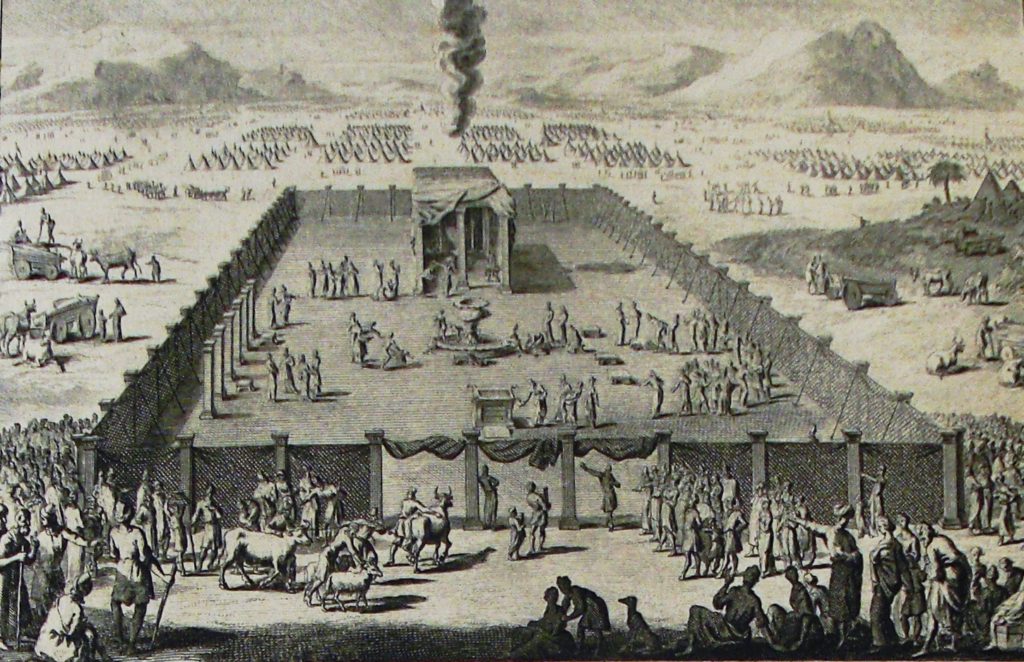What just happened:
The tabernacle is built and the Lord makes an appearance, as we finish Exodus. What’s a tabernacle, you ask? Wikipedia defines it thusly:
According to the Hebrew Bible, the Tabernacle, also known as the Tent of the Congregation, was the portable earthly dwelling place of Yahweh used by the Israelites from the Exodus until the conquest of Canaan.
And Wikimedia Commons offers this lovely image from the Phillip Medhurst Collection of Bible illustrations:
Of note:
- My co-readers had a wonderful reflection about this being the first great work of former slaves who had helped build Egypt. Now they build for themselves.
- Meanwhile, I ruminated on the (let’s be honest) bizarre amount of detail this week’s portion was serving up. I’m just saying, you have to be confident that you have your audience locked in if you’re going to dive this deep. Melville did it. Pynchon does it repeatedly. Nice to see the Torah was written by confident folks, with no fear that they would lose their crowd in details of acacia wood, gold, copper, crimson yarns, linen, dolphin skins, lapis lazuli, spices, oil, flesh hooks, goat’s hair, cups shaped like almond-blossoms, and the extraordinary tabernacling skills of Bezalel, son of Uri son of Hur, of the tribe of Judah.
- Adversity creates community. As can a shared past. Building something massive and mighty also bonds people with a sense of a common purpose, the common good, an appreciation for the moment and a stake in the future.
- Looking at the image above, it’s clear that the tabernacle is more than an extravagant tent or gold-covered arc. It’s a mobile town. A place you can carry with you. No surprise that it would be so precious to this wandering people in search of a home.
